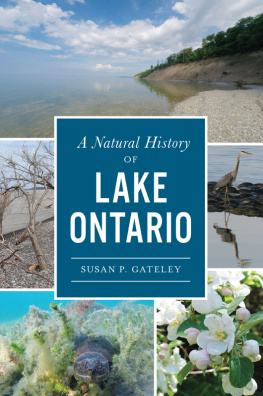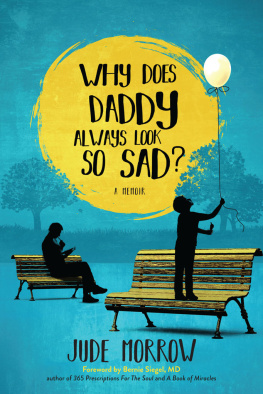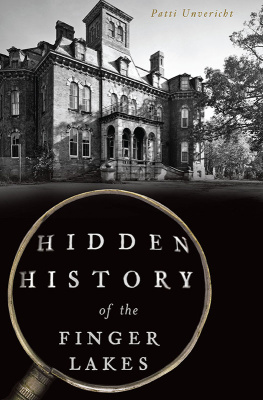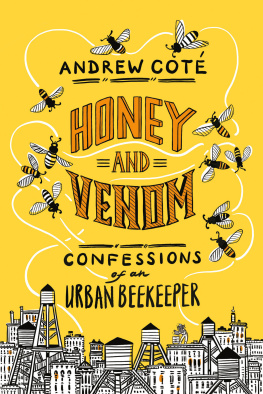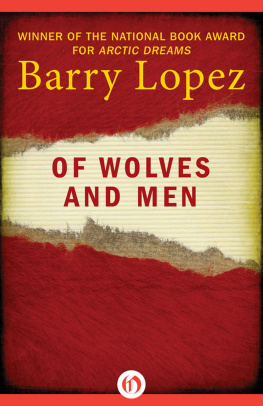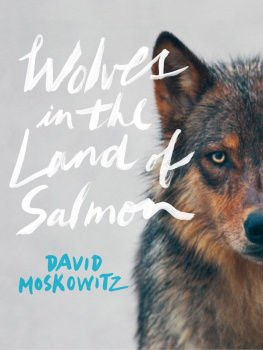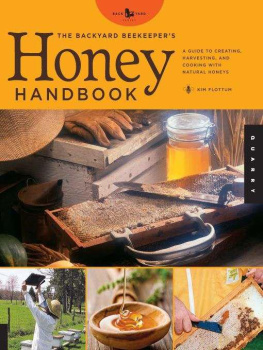Copyright 2004 by Susan Brind Morrow
All rights reserved
For information about permission to reproduce selections from this book, write to or to Permissions, Houghton Mifflin Harcourt Publishing Company, 3 Park Avenue, 19th Floor, New York, New York 10016.
hmhco.com
The Library of Congress has cataloged the print edition as follows:
Morrow, Susan Brind.
Wolves and honey : a hidden history of the natural world / Susan Brind Morrow.
p. cm
ISBN -13: 978-0-618-09856-9 ISBN -10: 0-618-09856-9
ISBN -13: 978-0-618-61920-7 (pbk.) ISBN -10: 0-618-61920-8 (pbk.)
1. New York (State)History. 2. Natural historyNew York (State). 3. Human ecologyNew York (State). 4. Finger Lakes Region (N.Y.)History. 5. Natural historyNew York (State)Finger Lakes Region. 6. Human ecologyNew York (State)Finger Lakes Region. 7. New York (State)Biography. 8. TrappersNew York (State)Biography. 9. BeekeepersNew York (State)Biography. 10. Morrow, Susan Brind. I. Title.
F119.M67 2004
974.7dc22 2004047278
An earlier version of Bees appeared in Harpers Magazine.
e ISBN 978-0-547-56172-1
v2.0518
first a bluebirds halo of blue from its fluttering wings
lukos=lux, light, as of eyes shining in the dark
lukospas: torn by wolves, epithet of bees because they are generated from corpses torn by wolves
L IDDELL AND S COTT
Greek-English Lexicon
The living appearance of a bird is seldom well expressed by dried skin, however perfect it may be, and in many instances a specimen gives no hint of the grace and beauty furnished in life by the bright colors of perishable parts: the eyes, the soft skin of bill and feet of many water birds, and, in rare cases, the living feathers themselves. For there are some birds, notably the group of black-headed gulls, some terns, and the larger mergansers, whose white plumage is suffused at certain seasons with a most beautiful tinge of shell-pink or rosy cream-color which is evanescent, and soon fades from the most carefully prepared and cherished skin. The rich colors often found in the bill, legs and feet also change with the process of drying, and it is a cause of surprise and regret to students to find how meager is the literature bearing upon this important item of bird coloration... It early became apparent to me that if such data were to be recorded it must be done from actual specimens, painted, in short, from living or freshly taken birds, before the settling of the bodily fluids or the disintegration or absorption of pigments could take place. This, it may be said, is frequently a matter of only an instant.
L OUIS A GASSIZ F UERTES
The Birds of New York State
Ithaca, N.Y., 1910
Everyone has noticed the influence of the American elm upon the abundance of the Baltimore oriole.
E LON H OWARD E ATON
The Birds of New York State
Canandaigua, N.Y., 1908
1
The Wood Duck
L AST NIGHT I DREAMT I saw Bob Kime. I knew we were saying goodbye. I held him tight. Then he took off his jacket and gave it to me. It was a hunting jacket, soft and old, sort of bruised, I thought, and very dear. And then he was gone.
I always thought of Bob as my own particular friend, but at the funeral home on Friday people were lined up down the block, people I didnt know. We waited in line for an hour and a half just to get into the room to approach the open casket where his body lay. Shawn was standing beside the casket, having very much his fathers face. Had I seen the picture in the back? he said. A photograph tacked on a board among dozens of othersof Bob with his dogs, with Shawn, with snow geese on the ground at their feetand with them one of me and Bob in our bee suits in his old red pickup twenty years ago. Last Sunday I almost called him up to ask about a hive. But then I thought, Bob will think this is pathetic, my calling like this, as though nothing has changed after all these years. If only I had called him. For on Monday he shot himself.
Like the many times I have gone out to watch the moon rise, only to find it has risen, huge and gold and silent in a place where I have failed to look, I had missed the point, and the point was aimed deep into my own life, into the golden territory of the familiar.
At the funeral on Saturday morning Terry was there, sitting in the back row a few feet from where I stood. At first I didnt see him. Terry is in his sixties now. His black hair is white. But there were the huge sloping shoulders, the same large head, the gold outline of the glasses he has worn these last ten years as he turned to laugh with the person beside him, some stranger on edge, as we all were, in the dim yellow light of the crowded room, Bobs soft profile, like something set in stone, occasionally visible through the rows of people shifting like rows of corn in the wind. When everyone rose to leave after the service was over I leaned forward and slipped my fingers into Terrys large rough hand. Well, Suzy, he said, all your buddies are gone now.
When I was growing up we thought Terry was a Cherokee Indian. It turned out that he was simply from California, and even though he had a crew cut and was something of a math whiz, and was also, it occurred to me only later, all the while a scientist and a chemistry professor at Cornell, he was our only real experience of the sixties, of an unconventional person. For a large man, who could easily have been threatening, he had an atmosphere of total ease, of kindness, and I had taken refuge in the safety of his presence for maybe thirty years.
Later Lan and I drove down East Lake Road where the Kime fields lay in soft shining squares of pale green oats and darker soy and golden wheat, patched like a lovely quilt in a rolling sweep down toward the dark blue line of Seneca Lake. The Kime barns and dwarf apple trees and farmhouselarge and white and square, the way the farmhouses are there, with a square windowed cupola on top where one can sit and see out over the fieldsstood by the road lined with maple trees, as they have stood from the earliest days of my life.
Beside the bluestone marker just beyonda gravestone carved in the shape of a dog, a curious antiquea dirt road leads down to Anne and Terrys cottage on a bluff above the lake, the burnt-out shell of an old log cabin of dark wood, polished now and screened, so that it recedes within a line of tall white pines and is almost invisible.
Anne has cancer, and has taken on a kind of translucence after these last months of illness, as though her fine blond hair were refined to silver. Her blue-green eyes had a radiance that surprised us as we walked in and saw her, for the first time in maybe a year.
We sat and watched the sun go down across the lake below through the broken black outlines of the trees. The faint flicker of a rainbow formed for an instant in the low sky to the north, as though it were the rim of something suddenly visible, a shining fragment of the rim of a halo. The last light fell in a wave of gold that swept quickly around the room, settling for a moment on each of us in turn. We sat quietly talking in the dark, in what seemed like a box of deep blue light, as we had in summers past, so that the evening had about it a sense of timelessness.
I reminded Terry of how once he said that everything operates on the level of four basic elements, their combining and breaking down, and that we are all just some spectacular sideshow, as though all the desperate suffering of life were simply an elaboration of this basic principle.
What is it that makes a human being? he had said. What defines being human? Falling in love. And what is that? Seeing something ordinary as... numinous. He thought a moment. Seeing. The intensity of that focus, that concentration of energy, would be the heating up in which some significant transformation could take place.




